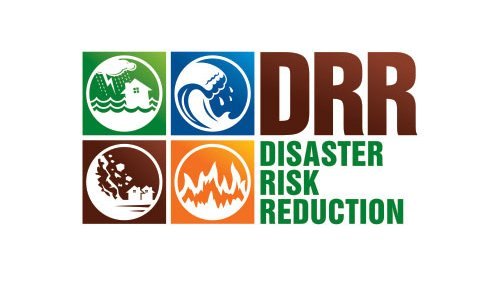
Disaster is usually defined as the sudden occurring of a natural event that causes huge loss of life and property. Earthquake, flood landslide tsunami etc., are the examples of the disaster.
Disaster is said to occur when vulnerability meets hazard.
Table of Contents
What is Disaster Risk Reduction (DRR)?
- DRR is the action taken with the objective of minimizing the risk that could be induced due to disaster.
- DRR is often taken as the synonymous for disaster risk management.
- The concept and practice of reducing disaster risks through systematic efforts to analyze and manage the causal factors of disasters, including through reduced exposure to hazards, lessened vulnerability of people and property, wise management of land and the environment, and improved preparedness for adverse events.” (United Nations International Strategy for Disaster Reduction, 2009)
Why DRR?
- Disaster causes the loss of lives and properties. Disaster also turns one’s life upside down. Disaster could erase all the social and economic progress achieved till date.
- Therefore, although disaster couldn’t be totally prevented, its impact can be reduced.
- DRR thus, helps in identifying the vulnerable groups early and protecting them.
- DRR is the way of being prepared against the sudden disasters
Components of DRR:
There are mainly four components of DRR. They are:
- Mitigation
- Preparation
- Response
- Recovery
1. Mitigation:
- Mitigation refers to the action that are to be taken before the occurrence of an event.
- Mitigation phase is for reducing the overall risk and impacts. It includes the steps like:
- Vulnerability assessment
- Risk assessment
- Hazard assessment
- Mitigation involves promoting multisector approach in disaster risk management and integration of DRR in all the development activities.
- Also includes maintenance of public infrastructure.
-
Preparedness:
- Preparedness is also done before the occurrence of an event/disaster
- All kinds of plan like vulnerability management plans, emergency preparedness plans, evacuation plans etc., are prepared.
- It includes actions like:
- Preparation of disaster relief plan
- Conduction of awareness and education programs for general public
- Sharing of the risk portfolio with the related partners and the institutions
- Development of early warning system
-
Response:
- Refers to the activities that are done after the event or disaster has occurred
- Saving human life is major concern at this stage
- Response actions include:
- Evacuation
- Emergency services (food, shelter, medical attention, etc.)
- Provision for medical help
- Coordination action between the local and international actions
- National and international support
- Proper mobilization of aids and grants provided
-
Recovery:
- Recovery is a post disaster action
- It includes activities like:
- Create emergency relief fund
- Rehabilitate the victims
- Reconstruction of the damages properties or make arrangement (through loans)
- Psychological counselling
Strategies to Strengthen DRR:
-
International DRR efforts
- Many countries are putting an effort to develop and implement the strategy for DRR.
- Financial and technical support also enhances DRR effort.
- International support and assistance at such situation encourage for DRR plan.
-
Integration of DRR into national policy
- Political commitment is key to advancing DRR issues at all levels.
- This integration helps in bringing overall change.
- DRR needs to be integrated in all developmental projects
- Along with commitment requires transparency.
- Such integration is also necessary to gain international support and assistance.
- Many international conferences and organizations also emphasize on integration of DRR plans into national policy.
-
Capacity building
- Capacity building is necessary as it represents the national/local strength.
- Capacity building can be done through improving governance, accountability and leadership of national societies and committees
- It includes providing education, trainings and skills volunteers and all the related staffs.
Challenges to Address DRR:
-
Effective and uniform disaster information system
- Needs to maintain disaster information system
- This needs to be uniform and scientific as well
- Issues like finance, technology, human resource, etc., effects in formation of such information system.
-
Lack of Political commitment
- Lack of political commitment is the major issue in developing country
- With the country’s main issue being fighting the poverty, improving the health, and establishment of basic infrastructure; DRR comes to the least priority.
- Political Commitment is utmost to prepare for disaster beforehand
-
Increased Risk
- Rapid unplanned urbanization furthers increases the risk of occurrence of disaster in such countries.
- Unplanned construction, town planning further makes the people more vulnerable.
- Population growth alone increases the risk.
- Developing countries are more prone to effects of climate change and the disaster induced.
-
Resource constraints
- From mitigation to recovery requires lots of resources.
- Developing countries find it difficult to afford such expenditure.
- Besides fund, technical assistance is also required.
- There needs to be intensive research about vulnerability assessment, risk assessment and many more for DRR which requires lot of resources.
- Inadequate infrastructure further adds up to already existing resource constraints.
References and for more information:
https://www.unisdr.org/who-we-are/what-is-drr
https://www.preventionweb.net/risk/drr-drm
http://www.iccgov.org/en/hot-topics/disaster-risk-reduction/
https://blog.concern.net/what-is-disaster-risk-reduction-and-why-does-it-matter
https://cmsdata.iucn.org/downloads/what_is_drr_feb_29.pdf
http://www.adrc.asia/publications/TDRM2005/TDRM_Good_Practices/PDF/PDF-2005e/Chapter2_2.2.pdf
https://www.unisdr.org/files/3769_ai504e00.pdf
http://lup.lub.lu.se/luur/download?func=downloadFile&recordOId=1888342&fileOId=1888362
http://www.bvsde.paho.org/bvsacd/cd46/cap15-urban2.pdf